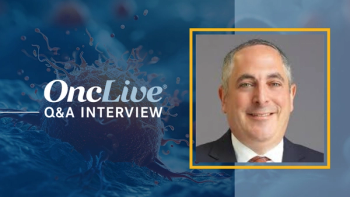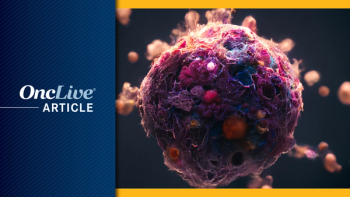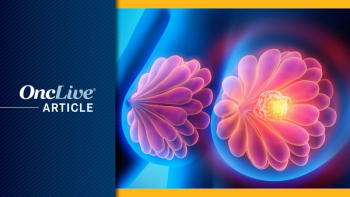
INV-1120 Proves Tolerable in Advanced Solid Tumors, Moves to Expansion in Combination With Pembrolizumab
Treatment with INV-1120 was well tolerated and demonstrated preliminary signals of stable disease as a single agent in patients with advanced solid tumors.
Treatment with INV-1120 was well tolerated and demonstrated preliminary signals of stable disease as a single agent in patients with advanced solid tumors, according to results from a phase 1 trial (NCT04443088) presented during the 2022 SITC Annual Meeting.
Twenty-one of 24 patients were evaluable for efficacy at the cutoff date of May 30, 2022. Nine (42.9%) of those had stable disease.
Two patients (8.3%) had dose-limiting toxicities (DLTs), both low-grade adverse effects (AEs) leading to more than 7 days of treatment interruption: grade 2 duodenal ulcer at 60 mg and grade 2 duodenitis at 200 mg.
“Single-agent INV-1120 was well tolerated in patients with advanced solid tumors. Five of 24 patients showed stable disease for at least 18 weeks and up to 64 weeks. With the support of preclinical data showing promising efficacy from combining an EP4 antagonist and anti–PD-1 [agent], a phase 1b [study] exploring the treatment of INV-1120 in combination with pembrolizumab is underway,” the study authors wrote in the poster.
PGE2 plays an important role in immunosuppression in cancer, and EP4, a G-protein coupled receptor is involved in suppressing innate and adaptive immune functions. INV-1120 is a highly selective, oral small molecule antagonist of the EP4 receptor for PGE2. In preclinical models, INV-1120 demonstrated antitumor activity alone and in combination with anti–PD-1 agents, as well as a favorable safety profile.
The study comprised a 3+3 design for dose escalation and evaluation of DLTs with 4-week treatment cycles. Eligible patients included those with advanced solid tumors including colorectal cancer (n = 8), lung cancer (n = 4), parotid adenocarcinoma (n = 2), sarcoma (n = 2), and others (n = 8).
The 6 dose levels, which were administered once daily, were as follows: 15 mg (n = 3), 30 mg (n = 3), 60 mg (n = 3-6), 100 mg (n = 3-6), 150 mg (n = 3-6), and 200 mg (n = 3-6).
The primary objective was the determination of the maximum tolerated dose and recommended phase 2 dose. Secondary objectives included the evaluation of pharmacokinetics, safety, and efficacy.
The median patient age was 58 years (range, 20-80) and most patients were female (n = 14; 58.3%). Twelve patients each had an ECOG performance status of 0 or 1. Most patients had received at least 4 lines of prior therapy (n = 19; 79.2%), and 7 patients (29.2%) had received prior treatment with a checkpoint inhibitor.
Regarding safety, 95.8% of patients (n = 23) experienced treatment-emergent adverse effects (TEAEs; grade ≥3, n = 4; 16.7%). The most common any-grade TEAEs were diarrhea (n = 6; 25%), nausea (n = 6; 25%), anemia (n = 6; 25%), and fatigue (n = 5; 20.8%). Serious TEAEs occurred in 3 patients (12.5%), and drug-related TEAEs occurred in 13 patients (54.2%; grade ≥3, n = 1; 4.2%).
The primary cause of treatment discontinuation was progressive disease. Five patients (20.8%) discontinued treatment because of TEAEs, 2 of which were deemed unrelated to INV-1120.
“INV-1120 was rapidly absorbed across all doses, and time to maximum drug concentration was observed at approximately 2 hours post dose. The exposure of INV-1120 increased with the dose from 15 mg to 100/150 mg and plateaued thereafter,” the authors concluded.
Reference
Sarantopoulos J, Patnaik A, Zhu Y, et al. Preliminary safety, efficacy and pharmacokinetic results of EP4 antagonist INV-1120 from a first-in-human study in subjects with advanced solid tumors. Presented at: 2022 SITC Annual Meeting; November 8-12, 2022; Boston, MA. Abstract 597

























































































